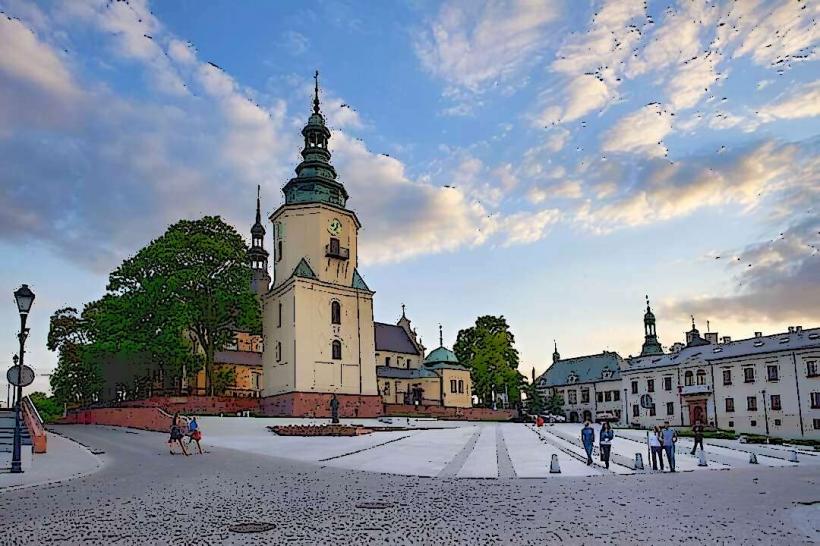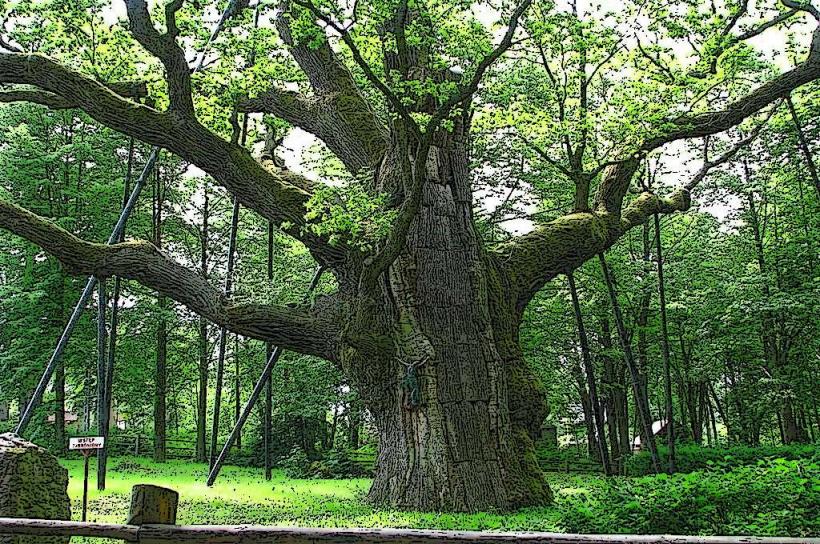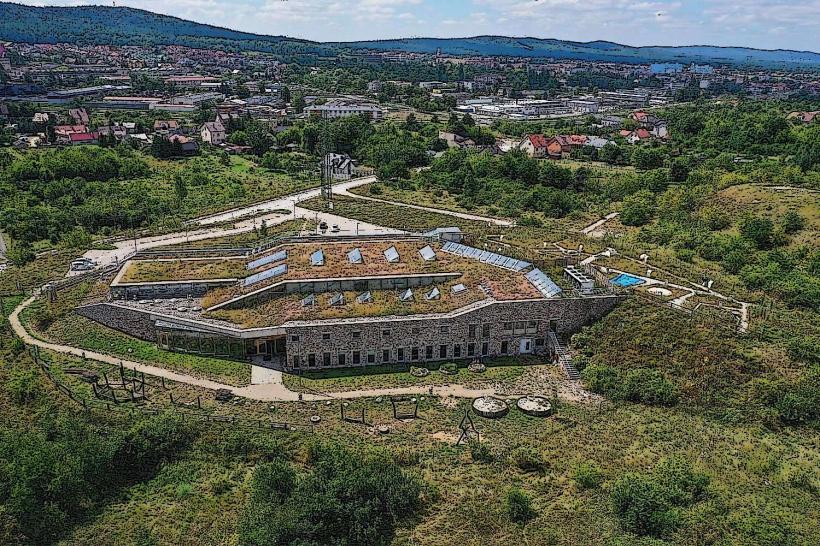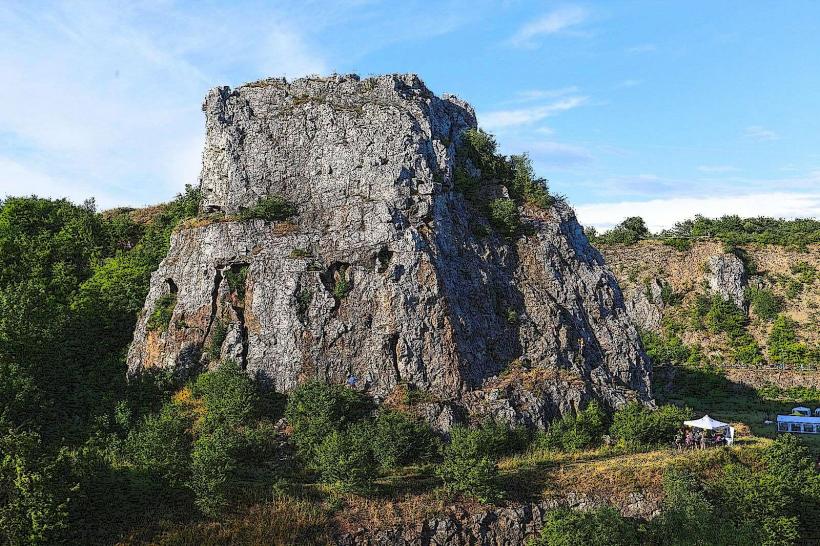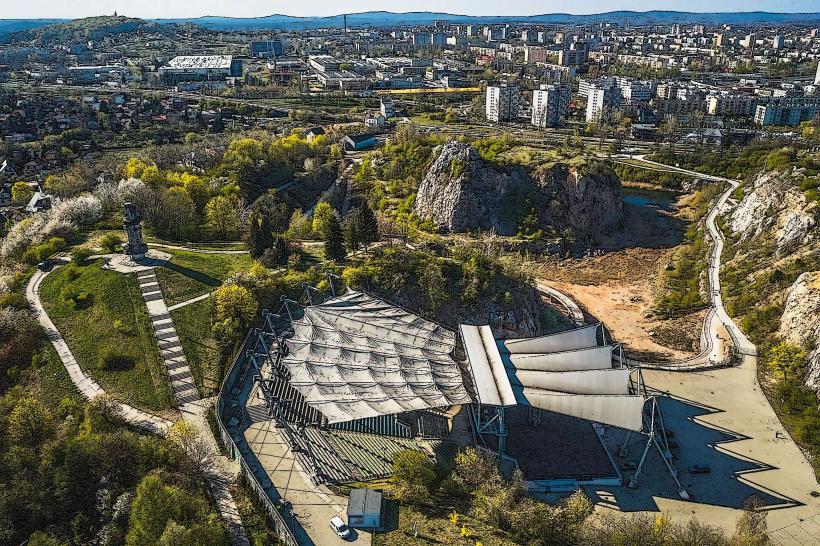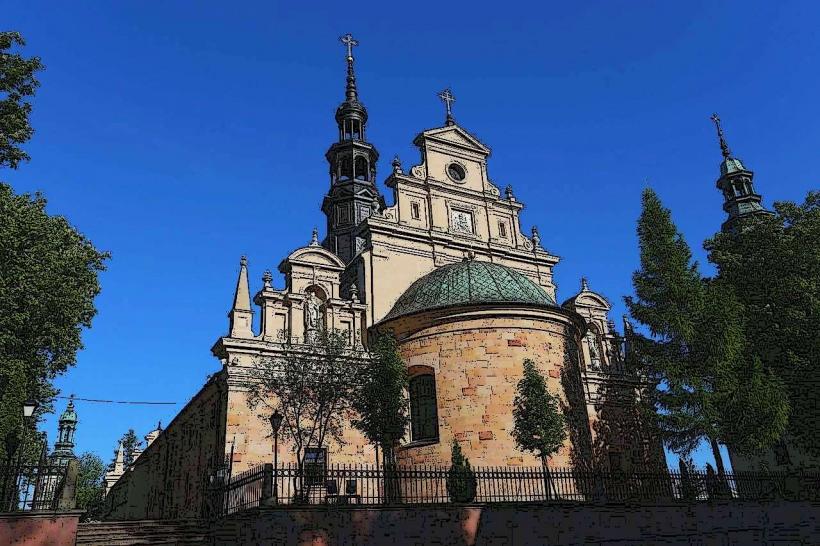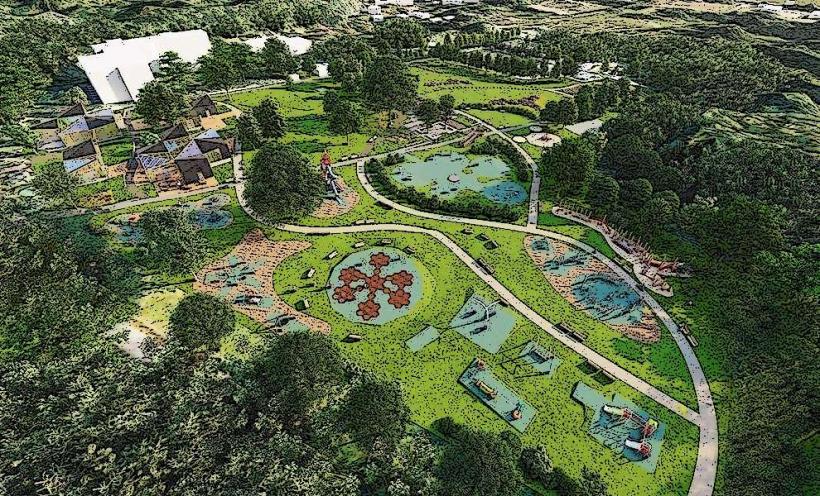Information
Landmark: Palace of the Kraków BishopsCity: Kielce
Country: Poland
Continent: Europe
The Palace of the Kraków Bishops, also known as the Bishops' Palace in Kielce (Pałac Biskupów Krakowskich), is a historic building located in the city of Kielce, Poland. It is one of the city's most important landmarks and a significant example of Baroque architecture.
Key Features of the Palace of the Kraków Bishops:
1. Historical Background
- The palace was originally built in the 17th century, during the time when the bishops of Kraków ruled over the region, known as the Kielce Voivodeship.
- The palace served as the residence of the Kraków bishops, who were the religious and political leaders of the region. It played a key role in the governance of the area and was used as a residence and administrative center.
- Over the centuries, the palace has undergone numerous renovations and reconstructions, reflecting various architectural styles and influences, including Baroque and Classicism.
2. Architectural Style
- The palace is primarily designed in the Baroque style, with elements of Classical and Renaissance architecture. It was designed to convey both religious and secular authority, and its grandeur reflects the power and wealth of the bishops at the time.
- The exterior of the palace features a combination of symmetrical facades, ornate windows, and decorative elements that highlight the Baroque style. The building is characterized by its large central courtyard, which was used for various ceremonial and administrative purposes.
- The roofline is adorned with gables and dormer windows, which contribute to the palace's imposing appearance.
3. Interior Design
- The interior of the palace was designed to reflect the status and wealth of its occupants. The rooms were furnished with luxurious furniture, paintings, and decorative details that showcased the bishops' power and influence.
- The great hall is one of the most impressive parts of the building, with its high ceilings, elaborate decorations, and beautiful frescoes.
- The palace contains a number of private chambers, each designed with care and attention to detail, reflecting the comfortable lifestyle of the bishops.
4. Cultural and Religious Role
- The Palace of the Kraków Bishops played a central role in the religious and political life of the region. The bishops were influential figures in both ecclesiastical matters and local governance, and their palace served as a hub for meetings, religious ceremonies, and social gatherings.
- The building was also a center for cultural activities, with the bishops supporting artists, musicians, and scholars. This contributed to the flourishing of Baroque culture in the region.
- The palace's chapel was an important religious site for the bishops and their guests, where masses and private prayers were conducted.
5. Museum and Modern Use
- Today, the Palace of the Kraków Bishops serves as a museum, showcasing the history and architecture of the building and the role it played in the region's religious and cultural life.
- The museum features exhibitions about the history of the bishops of Kraków, as well as artifacts and relics from the Baroque period. Visitors can explore the palace’s grand interiors, including the rooms where the bishops lived and worked, and learn about the palace's significance in Polish history.
- The palace also hosts temporary exhibitions related to Polish culture and religious art, and it is an important venue for educational programs and events.
6. Surrounding Area
- The Palace of the Kraków Bishops is situated in Kielce's historic district, near other important landmarks, including the Kielce Cathedral and the City Hall. The palace's gardens and surrounding grounds offer a peaceful space for visitors to enjoy the scenery.
- The palace is part of a larger complex of religious and historical buildings in Kielce, making it a key stop for anyone interested in the city’s cultural heritage.
Conclusion:
The Palace of the Kraków Bishops is a remarkable historical and architectural treasure in Kielce. Its Baroque design, rich history, and cultural significance make it a must-see for visitors to the city. Whether exploring its impressive interiors, learning about the role of the bishops in Polish history, or simply enjoying the tranquil gardens, the palace offers a unique glimpse into the religious and political life of Poland during the 17th and 18th centuries.

